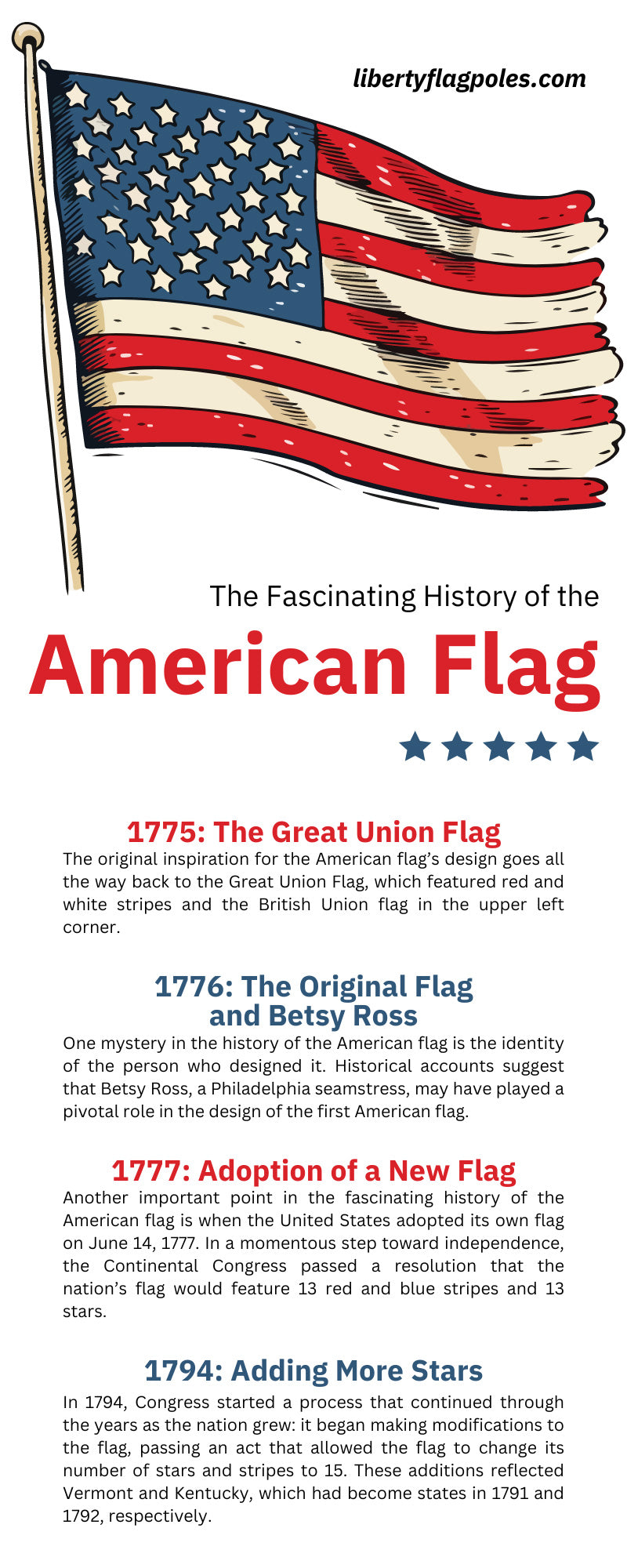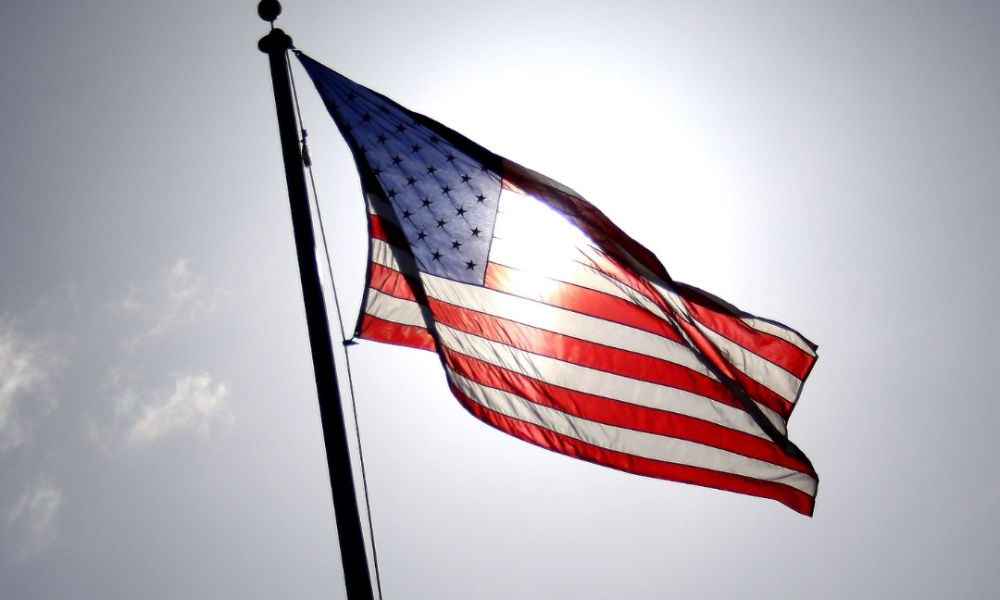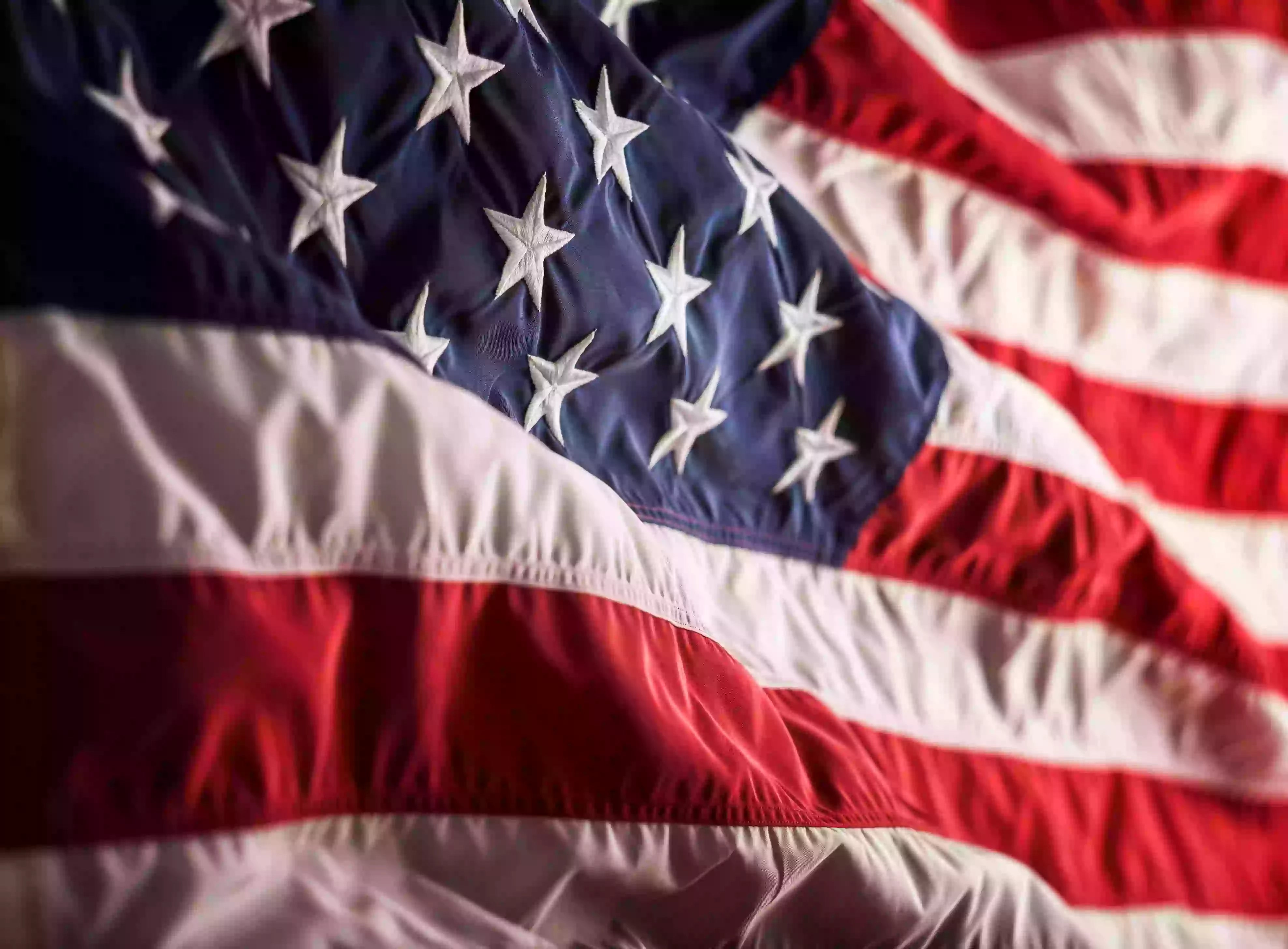The American flag holds a profound place in US history and in the hearts of its citizens. Since its official adoption, the flag has undergone several iterations, reflecting the nation’s growth and changes through the centuries. Read on to learn about the fascinating history of the American flag and how it has evolved.
1775: The Great Union Flag
The original inspiration for the American flag’s design goes all the way back to the Great Union Flag, which featured red and white stripes and the British Union flag in the upper left corner. Naval commander John Paul Jones flew the flag on his ship, the Alfred, in 1775. This flag later served as a basis for the design of the Stars and Stripes. This influence marks the beginning of the American flag’s story, reflecting the new country’s link to its colonial past and its desire to forge a distinct identity of its own.
1776: The Original Flag and Betsy Ross
One mystery in the history of the American flag is the identity of the person who designed it. Historical accounts suggest that Betsy Ross, a Philadelphia seamstress, may have played a pivotal role in the design of the first American flag. According to lore, George Washington approached Ross in 1776 with a rough sketch, and Ross suggested a key design change. She allegedly proposed that the stars should have 5 points rather than 6. This modification was more aesthetically pleasing and simpler to produce, making it easier for future flags to maintain uniformity.
There’s no definitive historical evidence to confirm Ross’s involvement, but her story has become an integral part of American folklore, embodying the spirit of innovation and craftsmanship.
1777: Adoption of a New Flag
Another important point in the fascinating history of the American flag is when the United States adopted its own flag on June 14, 1777. In a momentous step toward independence, the Continental Congress passed a resolution that the nation’s flag would feature 13 red and blue stripes and 13 stars. Both of these features on the flag represented the number of colonies the United States had at the time. However, the adoption of the flag also marked the creation of a new symbol for the fledgling nation and a step toward unifying the separate states under a common banner, embodying their dedication to liberty and justice.
1794: Adding More Stars
In 1794, Congress started a process that continued through the years as the nation grew: it began making modifications to the flag, passing an act that allowed the flag to change its number of stars and stripes to 15. These additions reflected Vermont and Kentucky, which had become states in 1791 and 1792, respectively.
This adjustment marked the only time in history that the American flag bore more than 13 stripes. Twenty-four years later, however, Congress passed a resolution that mandated the number should be permanently brought back down to 13. The changes the flag has undergone through the years has reaffirmed its role as a living symbol of the nation’s evolving identity, adaptable to the growth and change inherent in the American ethos of progress and unity.
1812: “The Star-Spangled Banner”
The American flag has not only inspired people’s patriotism through the centuries but also inspired the creation of the national anthem. The creator of the anthem, Francis Scott Key, was inspired by the sight of soldiers raising the American flag after the bombardment of Fort McHenry during the War of 1812. Afterward, Key wrote the poem “Defence of Fort M’Henry.” After the poem was set to the music of “The Anacreontic Song,” people came to know the poem as “The Star-Spangled Banner.”
Key’s words vividly captured the resilience and unwavering spirit of the United States, encapsulating the pride and emotional resonance the flag evoked among Americans. In 1931, Key’s tribute to the flag was officially adopted as the national anthem, embedding the flag even deeper into the heart of American identity.
1824: Old Glory
Through the years, the American flag has earned many nicknames, but one of the most iconic is “Old Glory.” As a reflection of his profound respect and affection for the flag, sea captain William Driver bestowed this nickname upon the flag in 1824 when he received one as a birthday present. Driver hung the flag in his ship during various sea voyages around the world. Driver’s original “Old Glory” survived vandalism attempts during the Civil War, encapsulating the resilience and enduring spirit of the nation.
Today, Driver’s “Old Glory” resides in the Smithsonian Institution in Washington, D.C. But the moniker itself is more than just a nickname. It symbolizes the pride, unity, and strength of the United States, echoing through time as a reminder of its enduring values and its citizens’ unwavering commitment to them.
1958: The Current Flag
In an intriguing twist to the history of the American flag, a high-school student from Lancaster, Ohio, conceived the current 50-star design as part of a school project in 1958. That student, Robert G. Heft, anticipated Alaska and Hawaii’s admission into the Union. With this in mind, Heft ingeniously modified the then-48-star flag using blue cloth and white stars to propose a new layout that could incorporate 50 stars. Despite receiving a lukewarm grade from his teacher, who doubted the design’s significance, President Dwight D. Eisenhower later chose Heft’s flag as the official new flag after the two new states were admitted.
This selection not only elevated Heft’s design to its iconic status but also showcased the American spirit of innovation and the importance of civic engagement from even the youngest citizens. The nation made Heft’s creation its official flag in 1960, and it remains a profound symbol of American perseverance and unity.
Today, the history of the American flag continues as people fly it to show their pride in the country. You can, too, with products from Liberty Flagpoles. Our durable, heavy-duty flagpoles will fly any flag, allowing you to create an impressive display on your property that reflects your patriotic spirit.








